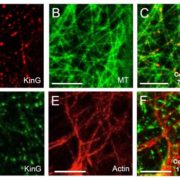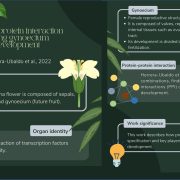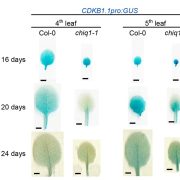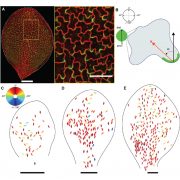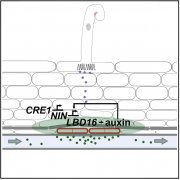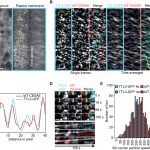Developmental functions of Marchantia ROP
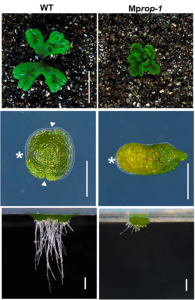 Precise control of cell division is an important requirement for proper development in multicellular organisms. Rho-like GTPases from Plants (ROPs) are key conserved regulators of cell polarity and morphogenesis, however, it is unknown if ROP signaling pathways regulate cell division patterning and meristem formation during embryogenesis and organogenesis. Additionally, the high degree of genetic redundancy in angiosperms (Arabidopsis encodes 11 ROPs) has hindered ROP functional studies. The bryophyte Marchantia polymorpha encodes a single ROP gene (MpROP), which makes it an excellent system to explore ROP functions during development, such as gemma formation, a process like embryogenesis or axillary meristem formation in angiosperms. Rong et al. show that MpROP localizes at the tip of growing rhizoids, and Mprop loss-of-function mutants display defective rhizoid growth, indicating an evolutionary conserved ROP function during polar tip growth in land plants. Strikingly, Mprop mutant gemmae display an absence of meristem notches and abnormal cell division patterns in the thalli and meristem notch-like area as well as reduced anisotropy of microtubules, indicating that MpROP likely regulates cortical microtubules organization, which in turns impacts the position and orientation of cell division planes. Finally, the authors were able to rescue the defective phenotypes observed in Mprop mutants by complementation using Arabidopsis ROP2, indicating that ROPs functions are broadly conserved among land plants. This interesting paper effectively establishes and validates Marchantia as a promising and simple system to elucidate the function of ROP proteins in complex developmental processes such as meristem formation and cell division spatial patterning. (Summary by Jesus Leon @jesussaur) Proc. Natl. Acad. Sci. USA 10.1073/pnas.2117803119
Precise control of cell division is an important requirement for proper development in multicellular organisms. Rho-like GTPases from Plants (ROPs) are key conserved regulators of cell polarity and morphogenesis, however, it is unknown if ROP signaling pathways regulate cell division patterning and meristem formation during embryogenesis and organogenesis. Additionally, the high degree of genetic redundancy in angiosperms (Arabidopsis encodes 11 ROPs) has hindered ROP functional studies. The bryophyte Marchantia polymorpha encodes a single ROP gene (MpROP), which makes it an excellent system to explore ROP functions during development, such as gemma formation, a process like embryogenesis or axillary meristem formation in angiosperms. Rong et al. show that MpROP localizes at the tip of growing rhizoids, and Mprop loss-of-function mutants display defective rhizoid growth, indicating an evolutionary conserved ROP function during polar tip growth in land plants. Strikingly, Mprop mutant gemmae display an absence of meristem notches and abnormal cell division patterns in the thalli and meristem notch-like area as well as reduced anisotropy of microtubules, indicating that MpROP likely regulates cortical microtubules organization, which in turns impacts the position and orientation of cell division planes. Finally, the authors were able to rescue the defective phenotypes observed in Mprop mutants by complementation using Arabidopsis ROP2, indicating that ROPs functions are broadly conserved among land plants. This interesting paper effectively establishes and validates Marchantia as a promising and simple system to elucidate the function of ROP proteins in complex developmental processes such as meristem formation and cell division spatial patterning. (Summary by Jesus Leon @jesussaur) Proc. Natl. Acad. Sci. USA 10.1073/pnas.2117803119



